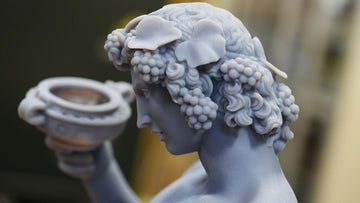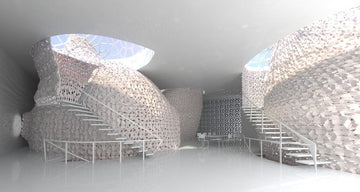The convergence of technology and art has given rise to a mesmerizing realm known as 3D printed art and sculptures. 3D printing, also referred to as additive manufacturing, has transformed the traditional boundaries of artistic expression, enabling artists to bring their visions to life with unprecedented precision and creativity. In this article, we will embark on a journey through the captivating world of 3D printed art, exploring its history, techniques, and the limitless possibilities it offers to artists and art enthusiasts alike.
The Emergence of 3D Printed Art:
The roots of 3D printed art can be traced back to the 1980s, when artists and innovators first began experimenting with early forms of 3D printing technology. Initially, 3D printing was primarily used for rapid prototyping in industries like engineering and manufacturing. However, visionary artists soon recognized its potential as a groundbreaking tool for artistic creation.
Techniques and Materials in 3D Printed Art:
The art of 3D printing involves a diverse range of techniques and materials that artists can explore. Filament-based 3D printing is a popular technique, where artists use thermoplastic filaments to create layered sculptures. Other methods, such as resin-based printing and powder bed fusion, offer different possibilities in terms of texture, detail, and complexity. Moreover, artists have access to an array of materials, including various plastics, resins, metals, ceramics, and even bioinks, opening up new frontiers for artistic expression.
Advantages of 3D Printed Art:
The adoption of 3D printing in art introduces several advantages that traditional sculpting methods may not offer. Precise control over design and geometry allows artists to create intricate and delicate structures, pushing the boundaries of sculptural art. Additionally, 3D printing enables the production of identical replicas of artworks, expanding accessibility to a broader audience and facilitating the preservation of artistic legacies.
Exploring Artistic Concepts and Themes:
3D printed art has provided artists with a platform to explore unique concepts and themes. Through a fusion of technology and creativity, artists are delving into subjects like futurism, surrealism, environmentalism, and even interactive art installations. The seamless integration of technology into artistic expression has created immersive experiences that engage audiences in new and exciting ways.
3D Printed Art in Fine Art Galleries and Museums:
The acceptance of 3D printed art in the traditional art world has been steadily growing. Fine art galleries and museums are increasingly exhibiting 3D printed sculptures, installations, and other forms of digital art. The juxtaposition of innovative technology with traditional art spaces challenges viewers to rethink the boundaries of art and the definition of creativity.
The Future of 3D Printed Art:
As 3D printing technology continues to evolve, the future of 3D printed art holds boundless possibilities. Advancements in materials and printing techniques will enable artists to create larger, more intricate, and sustainable sculptures. Moreover, collaborations between artists and engineers will drive the fusion of science and art, giving rise to visionary works that transcend conventional artistic boundaries.
The art of 3D printing has ushered in a new era of creative exploration and artistic expression. This revolutionary technology has expanded the horizons of sculptural art, allowing artists to materialize their imagination with unparalleled precision and detail. As the worlds of art and technology intertwine, 3D printed art continues to challenge and redefine the way we perceive and experience creativity. From art galleries to museums and public spaces, 3D printed art has earned its place in the artistic landscape, captivating audiences and inspiring a generation of artists to embrace the possibilities of technology in their pursuit of artistic excellence. As we embark on this fascinating journey, the future of 3D printed art holds the promise of even more groundbreaking and awe-inspiring creations, pushing the boundaries of human imagination and reaffirming the timeless nature of artistic innovation.






